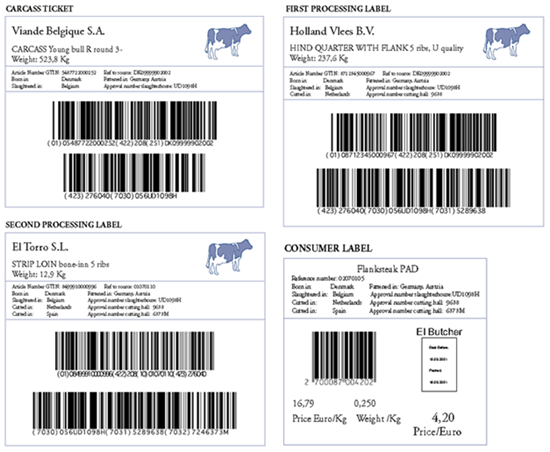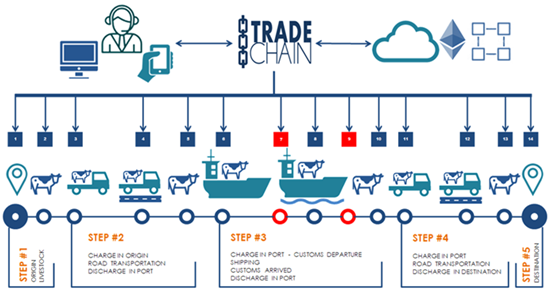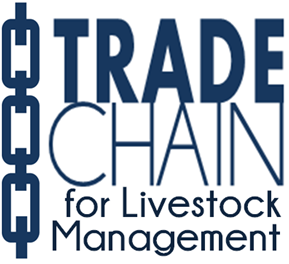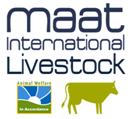TradeChain for Livestock Management has been designed to respond to today´s challenges of Food Industry generally and Beef Industry in particular
Food safety has become a critical priority for the supply chain. Today´s challege for Food Industry are increasingly demanding because the food supply chain is the most complex and fragmented of all supply chains.
Industry Situation
The production is found all over the world both on land and in water. A lot of the producers and intermediaries are difficult to identify and track.
For all the participants in the production chain this creates uncertainty and risk.
Mitigating this uncertainty comes at a cost, and the outcome may still be insufficient.
The problems that have been difficult -or impossible yet- to solve with current technologies include establishing reliable provenance and preventing fraud and counterfeiting.
These issues often have knock-on effects on public health and the environment, and reduce financial costs of unnecessary recalls of food products
TradeChain Industry Solution
In this order, Food Safety has become a critical priority for the supply chain. The big key is, rather than just identifying a more generalised commodity group as most market ERPs do, TradeChain provides an effective and cost-efficient traceability system accurately pinpoint any problem in food safety related to a specific geographical origin, slaughtering or processing facility, down to a farm or even to the single animal.
TradeChain Main areas of action
Conditions at the production facility: Conditions at product sites, like factories, fields, or fishing boats, are today difficult to verify and include labor conditions, environmental conditions, quality control in production etc. TradeChain uses blockchain to make it very difficult to falsify or misrepresent conditions in production.
A digital representation of the conditions such as a photo or a digital file can be stored at the production facility, or in a mobile app. This could for example be a photograph of a catch of fish or a factory during operation. A verification of the same files, a digital fingerprint in the form of a hash, is published in a blockchain.
Time and location cannot be manipulated since it is recorded in the blockchain. By making random inspections an inspector can then verify that the photograph corresponds to the actual conditions at the facility, the workforce, and that the outcome/production corresponds to the one reported to the BlockChain.
Tracking of food volumes in the supply chain: Identification of individual grains, beans or bulk commodities often bought on a spot market such as coffe, tea, oils, sugar, cacao etc or are difficult or impossible to track. However, appliying the BlockChain it is possible to track the total volumes bought and sold for each participant in the supply chain.
The benefit from using the BlockChain is that no central party needs to be trusted in getting all the data on transactions and actors, while still for example let volumes be transparent for everyone in the chain.
To exemplify; with the BlockChain the volumes of organic soybeans sold cannot be higher than the volume of organic soybeans bought for any party in the supply chain. Also, for instance, with BlockChain it’s not possible to buy ordinary rice and mix it with a small portion of basmati rice, and sell the entire volume at the higher basmati rice price since the tracked amount of basmati rice going in to the chain can not be higher than the volume going out
Tracking of food items in the supply chain: BlockChain technology enables possibilities to track a particular package of food, can or any item to which you can put a unique identifier -live animals inclusive- such as a barcode, QR code, or a RfID transmitter. Compared with existing technologies, the BlockChain can easily regulate who gets access to the information and identities behind each product..
Integration between regular transaction data and more complex data -coming from the application of another great technology such as IoT- for instance, sensor data of temperature or humidity... can be directly connected to the product.
TradeChain specific illustration for Beef Industry
For instance, analizing the Beef Industry, we see that the European Commission has recognised an urgent need to regain consumer confidence in beef products and therefore believes in fast tracing of beef products throughout the supply chain. Consequently on the basis of a proposal from the European Commission, the European Parliament and Council have adapted a regulation on compulsory labelling of beef (EC) 1760/2000 (here called the Beef Labelling Regulation). This Regulation became effective in all EU Member States from January 2001.
The Beef Labelling Regulation aims to ensure a link between, on one hand, the identification of the carcass, quarter or pieces of beef and on the other hand, the individual animal or the group of animals from which they are derived.

NOTE: Images are for illustration only. Bar codes symbols are for illustration only and not printed to scale
The execution of all these processes on BlockChain provide absolute "rules of trust", since the registration is inviolable and immutable and therefore the consumer will be completely protected since the application of the regulatory norms will be completely guaranteed
TradeChain applied to Cattle Transboundary Transport
In an European context in which livestock production is constantly growing and where linked economic activity is becoming increasingly important, cross-border transport of livestock has become a determining factor in ensuring the health and welfare of transported animals and the quality end of the product motived by the huge impact that the transport phase has on the final product
In the same way that it is essential to establish a management framework for the extended responsibilities of the producer such that it is involved in prevention and in the organization of the management thereof, it´s also essential that the activities of the different players involved in the chain of cattle mobility are standardized, monitored and audited in order to ensure strict compliance with the objectives defined.

 Document authentication and Identity Management are closely related, as basic electronic document authentication can only be established if:
Document authentication and Identity Management are closely related, as basic electronic document authentication can only be established if:
Reputed authenticating authorities exist and if The identity of the requesting entities is known to the authenticating authorities TradeChain will offer electronic authentication services where the entire authentication chain. Permissioned access to the authenticated resources by users or system processes will be ensured by the BlockChain built-in capabilities
 TradeChain offers the functional suite to manage the "rules of truth" for Cattle Management, where electronic transactions and all assets and related documents can be published securely and made publicly verifiable.TradeChain offers customizable trust models, which make it possible to guarantee both data privacy and auditability required by all the players in the industry: businesses, logistics, financial services, insurances, authorities... focused on the blockchain-based services with an emphasis on Supply/Trade Finance/KYC/AML
TradeChain offers the functional suite to manage the "rules of truth" for Cattle Management, where electronic transactions and all assets and related documents can be published securely and made publicly verifiable.TradeChain offers customizable trust models, which make it possible to guarantee both data privacy and auditability required by all the players in the industry: businesses, logistics, financial services, insurances, authorities... focused on the blockchain-based services with an emphasis on Supply/Trade Finance/KYC/AML
 The ability to secure peer-to-peer financing deals systematically and to execute instant transfers and sanctions are the main advantages that the use of TradeChain introduces. This is only possible if you rely on the secure BlockChain network to control the processing of the funds. To address this fundamental requirement, TradeChain enables the development of Smart Contracts based on cryptographic tokens that will circulate among the stakeholders as the primary underlying medium of exchange for supporting deals and trade services. In this way, it will also allow tokenize credit, which will enable further financial trading opportunities
The ability to secure peer-to-peer financing deals systematically and to execute instant transfers and sanctions are the main advantages that the use of TradeChain introduces. This is only possible if you rely on the secure BlockChain network to control the processing of the funds. To address this fundamental requirement, TradeChain enables the development of Smart Contracts based on cryptographic tokens that will circulate among the stakeholders as the primary underlying medium of exchange for supporting deals and trade services. In this way, it will also allow tokenize credit, which will enable further financial trading opportunities
TradeChain Success Case deployed in Castilla-La Mancha, Spain
TradeChain applied to Virtual Livestock Unit is a set of tools that allows the livestock Industry to interact with the Public Administration in an agile and efficient way, being able to access and initiate its procedures in a telematic way.
Improves the relationship between the agents and Public Adminstration
(a) It makes available to the agents the possibility of carrying out procedures electronically, from internet.
(b) Streamlines the start of procedures and procedures management
(c) Integration and interaction with the most important systems of Public Administration
(d) Integration with DNIe and electronic certificate for signature and authentication.
(e) Law 11/2007 electronic access - Right of citizens to interact with Public Administrations by electronic means




